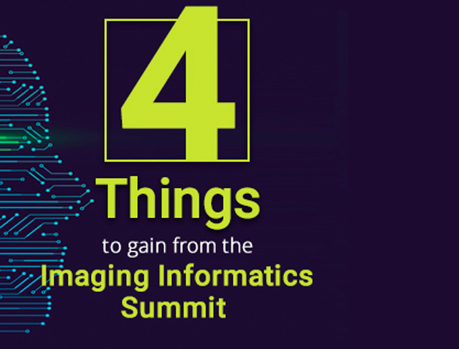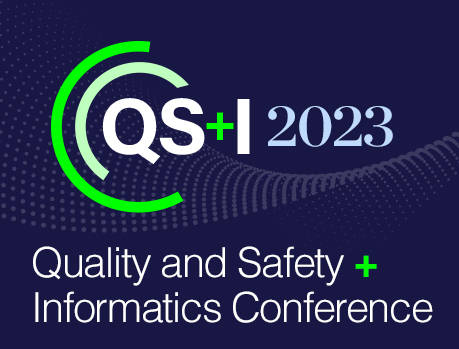4 Reasons to Attend the Imaging Informatics Summit

In 2019, the ACR is bringing back the Imaging Informatics Summit for radiology professionals, practice leaders, industry partners, and policy makers to explore strategies for implementing AI in practice. This year, the Summit will take place October 5–6, 2019 in Washington, D.C.
Across the country many healthcare professionals are getting stuck on some of the more challenging AI development points — from code writing to algorithm testing and from implementation to commercialization. At this once-a-year educational and networking opportunity for the key players active in the space, those questions will be answered by those who have solved the thorny development issues.
We’re also shedding light on how the influx of commercially available AI-informed software applications that have been integrated into clinical workflows have led practice leaders towards broader integration of AI into daily work. The Informatics Summit is an opportunity to gain access to expertise by sharing best practices with those who are developing and using AI in clinical care and hospital operations.
Space is limited, so if you have not registered, register soon . If you’re curious about the key takeaways, here’s an unofficial guide of four things you can expect to get out of the meeting.
1. Data is still a concern
Radiologists involved in AI are confronted regularly with the legal and ethical issues surrounding data access, data sharing, and data use. Hospitals face potential partnerships with for-profit entities and the most advanced AI development university laboratories. If your goal is to free up data for partnership or research analysis at the departmental level, you may find yourself running counter to the priorities of your central IT leaders — whose primary cybersecurity strategic goal might be patient data protection.
In an era of unprecedented value for patient information, IT’s position of control over data should not be surprising, though the consequences may be. Many institutions become stuck and unable to move past data privacy concerns, while others have found approaches that are both safe and forward-thinking.
The Informatics Summit will address methods for demystifying AI and for aligning hospital security, compliance, and patient advocacy groups. The goal is to help these groups better understand that AI can offer tangible benefits as a way to enhance patient care — as a contracting consideration, and as a method to make your healthcare organization’s data more valuable — while maintaining appropriate protections. In our first session, you’ll have a chance to learn from IT experts, a patient advocate, hospital administration, and a legal expert about the most effective (and ineffective) approaches for AI integration into your clinical and research enterprises.
2. Federal standards for AI are (still) changing
Unlike other medical devices, algorithms are not static. AI algorithms improve iteratively through ongoing exposure to data and continual feedback from the developer. During AI clinical adoption, radiologists must be able to answer how to best evaluate algorithms that were developed by others — using data and methods largely unknown to them — and that may still be undergoing further evolution.
Imagers must also recognize that outcomes will vary from site to site due to differences in imaging techniques, patient populations, and degrees of user engagement. This development and site fluidity create challenges for the current regulatory process. The FDA is attempting to address these challenges by establishing new, proposed regulatory frameworks .
At the Informatics Summit, the FDA’s Brandon Gallas and Jennifer Segui will share the latest FDA plans for evaluating AI devices. You’ll come away with a better understanding of the regulatory landscape, how you can efficiently develop your own AI, and how best to safely integrate AI from others into your clinical practice.
3. Enterprise solutions for new technology requires buy-in from all shareholders
In many cases, central IT does not have the deep familiarity with technology hardware, software, analyst knowledge, or innovation processes that is required for development of AI. Building bridges between disparate groups is essential to ensure necessary support, connecting infrastructure, and processes. Along the way, territorial governances, limited resources, and cost allocation can slow progress toward bringing AI development or software to any institution.
Managing the IT supply chain to build and deploy AI to the clinical workflow is complex — including issues ranging from purchasing and contracting to co-development agreements and intellectual property. The Summit is a chance to learn how to successfully align departments and stakeholders with different objectives in developing and implementing AI. This may enable a more productive, higher-level, and less emotionally-charged conversation regarding the value and potential uses of organizational data and AI-informed care.
4. A hands-on ACR AI-LAB™ demonstration lab will show you how radiologists can bring AI to their own institutions
You’ll be among the first to try out ACR AI-LAB and see how it will be a game-changer for radiologists. Throughout the Summit, a demo lab on ACR AI-LAB will give you an opportunity to see firsthand how the new ACR software platform enables radiologists to modify algorithms for use at their own institutions — without writing software code.
The ability to improve an algorithm while maintaining patient data securely behind your hospital’s firewall has the potential to make AI available to improve patient care for you, your colleagues, and your patients.
Don’t miss out
The 2019 ACR Imaging Informatics Summit promises to serve up the insight and opportunities you need to manage the latest in AI. Don’t miss out. Register today >>
Pro Tip: The Summit ends Sunday at noon, and your evenings are free. You’ll have time to take advantage of all of the nearby Washington, D.C. attractions, including:
• The National Zoo showcases more than 2000 animals from around the world, including the famous pandas.
• The National Air and Space Museum is one of the world’s most popular museums, and the Museum of Natural History has brought back the cool T. rex and has changing exhibits of interest to all ages.
• Enjoy Rock Creek Park .
• Find dinner, shopping, and entertainment in Georgetown .
• Take in the view of the Washington Monument , U.S. Capitol , and museums and sites on the National Mall .
Christopher J. Roth, MD, MMCI | Associate Professor of Radiology, Vice Chair, Information Technology and Clinical Informatics and Director of Imaging Informatics Strategy, Duke Health
4 Reasons to Attend the Imaging Informatics Summit
-

You may also like
Harmonizing Horizons: Reflections from the ACR Quality and Safety + Informatics Conference 2023November 10, 2023 | Dogan Polat, MDAs radiologists, we strive to deliver high-quality images for interpretation while maintaining patient safety, and to deliver accurate, concise reports that will inform patient care. We have improved image quality with advances in technology and attention to optimizing protocols. We have made a stronger commitment to patient safety, comfort, and satisfaction with research, communication, and education about contrast and radiation issues. But when it comes to radiology reports, little has changed over the past century.